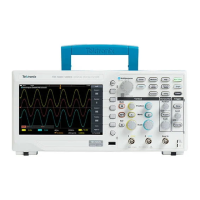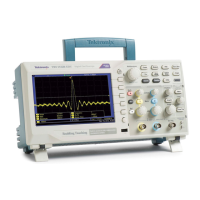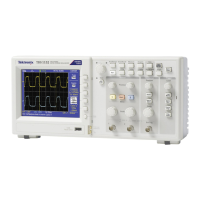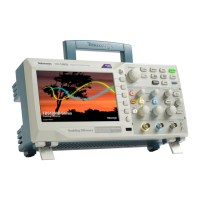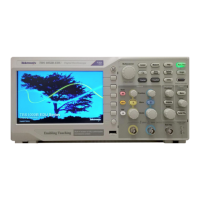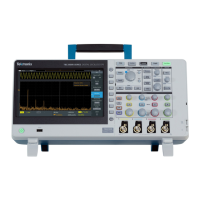Specifications
Table 1-1: Signal acquisition system characteristics (cont.)
With the same signal applied to each channel, CMRR is the ratio of the acquired signal amplitude to the
amplitude of the MATH difference waveform, either (Channel 1 - Channel 2), (Channel 2 - Channel 1)
Model
Common Mode Rejection Ratio
TBS1154
TBS1152
TBS1104
TBS1102
100:1 at 60 Hz, reducing to 10:1 with 50 MHz sine wave, with equal
Volts/Div and Coupling s ettings on each channel.
Common Mode
Rejection Ratio (CMRR),
typical
TBS1064
TBS1062
TBS1042
TBS1022
100:1 at 60 Hz, reducing to 20:1 with a sine wave with frequency equal to
½ the -3 dB bandwidth and with equal Volts//Div and Coupling settings
on each channel.
Section 4.11.1 of IEEE std. 1057. It is the ratio of the level of a signal input into one channel to that of
the same signal present in another channel due to stray coupling.
Model
Crosstalk
TBS1154, TBS1152 ≥ 100:1 w ith a 75 MHz sine wave and with equal V/div settings on each
channel
TBS1104, TBS1102 ≥ 100:1 w ith a 50 MHz sine wave and with equal V/div settings on each
channel
TBS1064, TBS1062 ≥ 100:1 w ith a 30 MHz sine wave and with equal V/div settings on each
channel
TBS1042 ≥ 100:1 w ith a 20 MHz sine wave and with equal V/div settings on each
channel
Crosstalk (Channel
Isolation)
TBS1022 ≥ 100:1 w ith a 10 MHz sine wave and with equal V/div settings on each
channel
Time Base System
Table 1-2: Time base system
Characteristic
Description
This is the range of real-time rates, expressed in samples/second, at which a digitizer samples signals at
its inputs and stores the samples in memory to produce a r ecord of time-sequential samples. (IEEE
1057, 2.2.1)
Model
Sample-rate range
TBS1154, TBS1152
TBS1104, TBS1102
TBS1064, TBS1062
5 S/s to 1000 MS/s
Sample-Rate Range
TBS1042
TBS1022
5 S/s to 500 MS/s
1–6 TBS1000 Series O scilloscope Service Manual
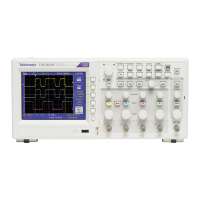
